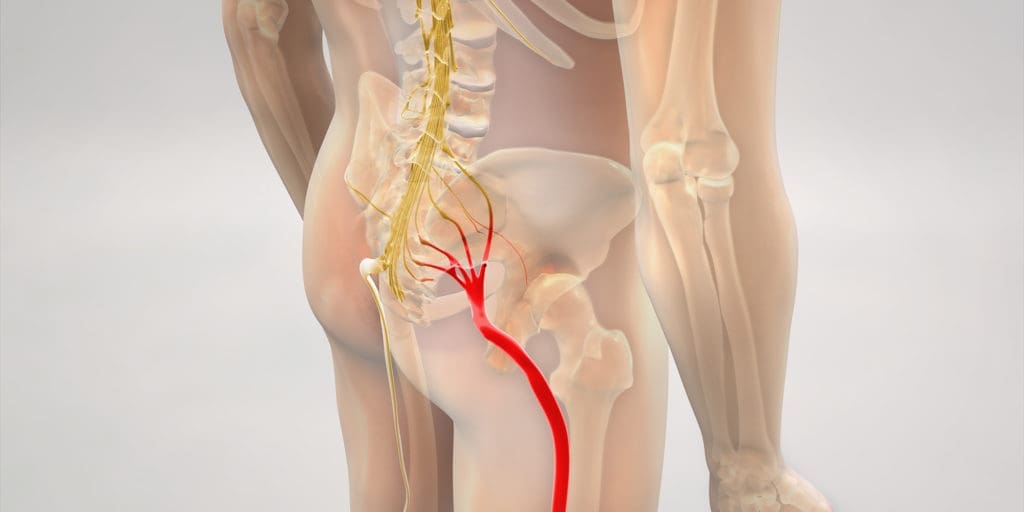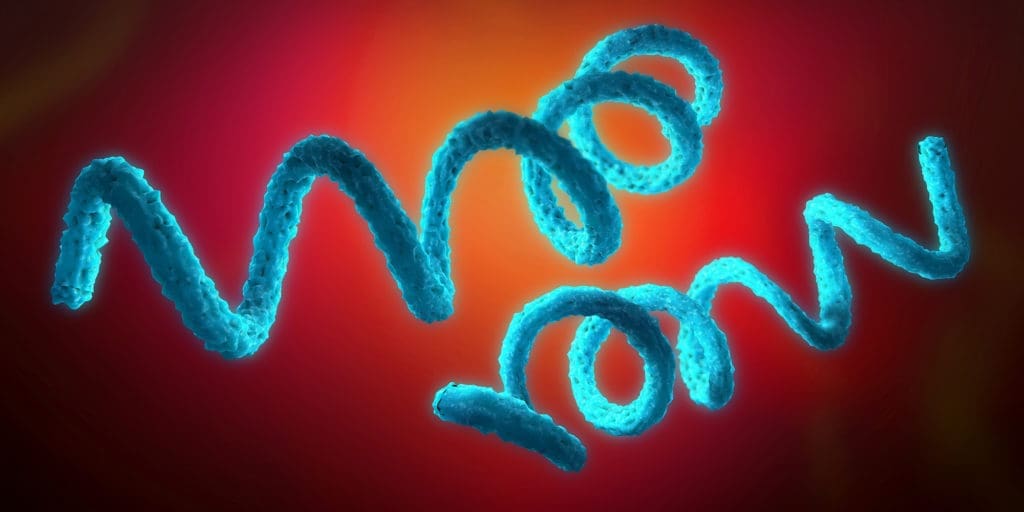Neuropathic (nerve) pain is one of the leading causes of chronic pain in the United States, affecting over 30 million people—one out of every ten adults. It’s typically caused by progressive nerve disease, such as multiple sclerosis, but can also occur in the event of an injury or infection in which a nerve becomes either compressed or damaged.
This type of pain is almost always chronic, and as a result, is useful when diagnosing it from regular nociceptive (non-neuropathic) pain. Non-neuropathic pain occurs when there is a cause, such as stubbing a toe or bumping one’s head. In these instances, pain is sent via the nerves immediately in response to the action. In people with chronic neuropathic pain, there is no trigger, and pain sensations are sent to the brain with no cause.
Chronic neuropathic pain can be debilitating, and for some can cause a lifetime of pain and discomfort. Understanding the causes and symptoms of some of the most common causes of neuropathic pain can help determine the right treatment and cause of action to take. Below are some of the most common types of neuropathic pain, and ways to combat them.
Disease
 One of the most common causes of neuropathic pain is diseases. Certain diseases can cause progressive damage and deterioration of nerves. Nerve pain can be a symptom or causation of these diseases and has been observed in many different types of diseases. Diseases that can cause or have symptoms of neuropathic pain can include but are not limited to the following.
One of the most common causes of neuropathic pain is diseases. Certain diseases can cause progressive damage and deterioration of nerves. Nerve pain can be a symptom or causation of these diseases and has been observed in many different types of diseases. Diseases that can cause or have symptoms of neuropathic pain can include but are not limited to the following.
Diabetes
Chronic neuropathic pain is extremely common in people with diabetes. Referred to as diabetic neuropathy, Mayo Clinic reports that as many as 50% of people with diabetes suffer from some sort of diabetic nerve pain. Diabetic neuropathy occurs when blood sugar (glucose) levels become too high, damaging nerves throughout the body. The most common nerves damaged by diabetic neuropathy are the legs and feet.
There are four main types of diabetic neuropathy, each with its own symptoms and side effects. It’s possible to have multiple types of diabetic neuropathy at the same time, which can oftentimes make it difficult to differentiate between them. The four types of diabetic neuropathy are as follows.
- Peripheral Neuropathy: Peripheral neuropathy is the most common type of neuropathy in individuals with diabetes. It first affects the legs and feet, and eventually can spread to the arms and hands. Symptoms of peripheral neuropathy can include:
- Numbness and tingling in the feet or hands
- Reduced ability to sense temperature or pain
- Sharp pains or cramping
- Muscle weakness, especially in the legs and feet
- Autonomic Neuropathy: This type of neuropathy affects the autonomic nervous system; the body’s control system for organs such as the heart, bladder, stomach, intestines, and eyes. Diabetes can interfere with certain functions of these organs, leading to symptoms such as:
- Bladder or bowel problems
- Difficulty swallowing
- Nausea
- Vomiting
- Loss of appetite
- Difficulty adjusting to low light
- Proximal Neuropathy: Often referred to by doctors as diabetic polyradiculopathy, proximal neuropathy is very rare, and can affect nerves in the chest, abdomen, hips, legs, buttocks, and thighs. Johns Hopkins Medicine reports that around 1% of people with type two diabetes, and tend to be diagnosed more in older patients. Signs of proximal neuropathy include:
- Weight loss
- Pain in one side of the body
- Severe hip or thigh pain
- Weakness in affected muscles
- Difficulty rising from a sitting position
- Mononeuropathy: Also called focal neuropathy, mononeuropathy typically will only affect one singular nerve at a time, with symptoms and signs differing between the nerve affected. Mononeuropathy often affects areas such as the head, chest, or legs, with symptoms including:
- Eye pain
- Bell’s palsy (paralysis of one side of the face)
- Double vision
- Chest pains mistook for a heart attack
- Weakness in the hands
Multiple Sclerosis


Currently, there are no curative solutions for people suffering from MS. However, recent years have brought about major advancements in the medical field, improving both the quality of life and management of symptoms for people with MS.
Symptoms and indications of MS vary greatly depending on the area of the CNS affected; however, vision problems are among the first to manifest for many cases of MS. Symptoms of MS can include but are not limited to, the following.
- Vision Symptoms
- Blurred vision
- Poor contrast or color vision
- Pain upon eye movement
- External/Physical Symptoms
- Walking difficulty or lack of coordination, often causing an unsteady gait
- Numbness or tingling of the face or extremities
- Spasticity (feeling of stiffness in certain muscles; most commonly in the legs)
- Weakness of certain muscles
- Internal Symptoms
- Dizziness or vertigo
- Bowel or bladder problems such as constipation or bladder dysfunction
- Fatigue
- Sexual problems; damage to certain parts of the nervous system can affect sexual organs and their response to outside stimulus such as arousal
- Mental Symptoms
- Cognitive changes including the ability to:
- Process information
- Learn and remember new information
- Solve Problems
- Focus
- Accurately perceive the environment
- Depression
- Mood swings
- Irritability
- Episodes of uncontrollable laughing and crying
- Cognitive changes including the ability to:
Cancer and Cancer Treatments
Cancer, and the treatment of it, can also cause chronic neuropathic pain.
Other Diseases or Conditions that can Cause Neuropathy
- Trigeminal neuralgia
- Alcoholism
- HIV infections or AIDS
- Multiple myeloma
- Rheumatoid arthritis
Injury


While most damages to the peripheral nervous system are remedied by either the body itself or treatment, some can worsen and become chronic. It’s always important to treat any potential damage to the peripheral nerves to avoid further or future damage.
Injuries that can typically cause damage to the peripheral nerves are usually caused by herniated discs or by some type of nerve compression. Some of the most common conditions caused by injury are listed below.
Sciatica
Sciatica is a painful, chronic condition that causes the sciatic nerve to become inflamed, irritated, or pinched. The sciatic nerve is the largest single nerve in the human body, consisting of five separate nerve roots in the lower spine. It passes through the buttocks and hips and runs the length of the leg down to the bottom of the feet. The sciatic nerve plays an essential role in connecting the spinal cord to the muscles and skin of the legs and feet.
While there are many different causes of sciatica, such as certain congenital disorders such as spinal stenosis, the most common is by way of injury. Sciatica is typically brought about by the compression or irritation of the sciatic nerve, which is most commonly done in the case of herniated or slipped discs.
A herniated disc occurs when a disc in the lower back may bulge, or herniate, causing irritation, or compression of a sciatic nerve root. When this type of injury happens, the natural cushion between the spine’s vertebrae swells, causing the disc to expand into places where nerves usually reside, such as the sciatic nerve. As a result, nerves can become compressed, causing discomfort, fatigue, and numbness in the affected area.
Sciatica is rare in young adults and is most commonly diagnosed in those between 30-50 years old. Since sciatica is typically caused by injuries, it is often easy to trace symptoms back to a particular event. However, sciatica can be caused by other events, making it difficult to diagnose at times. Below are some of the most common symptoms of sciatica.
- Throbbing pain, typically in one leg
- Pain in the right buttock, hamstring, knee, calf, ankle, and/or foot
- Weakness in the knees or feet
- Difficulty bending the lower joints
- Weak or abnormal reflexes in the legs
- Numbness, ‘pins and needles’, or burning sensations in the buttocks, hips, or legs
- Difficulty standing up
Carpal Tunnel Syndrome
Carpal tunnel syndrome is among the most common nerve disorders experienced today. The American College of Rheumatology estimates that anywhere between 4-10 million people in the United States suffer from carpal tunnel syndrome. It occurs when a nerve is compressed in the carpal tunnel, a narrow passageway on the underside of the wrist. This compression can cause numbness, tingling, or weakness in the hand and fingers.
Carpal tunnel syndrome occurs more frequently in middle-aged to older individuals, and females are three times more likely to be diagnosed with carpal tunnel syndrome than males. While there are no definitive causes of carpal tunnel syndrome, it is thought that some repetitive actions, such as typing or frequent wrist movements, cause these nerves to become compressed or inflamed. Diabetes, hyperthyroidism, rheumatoid arthritis, and pregnancy are also thought to cause carpal tunnel syndrome.
Symptoms of carpal tunnel syndrome can include:
- Tingling or numbness, typically in the thumb, middle, or index fingers
- Electric shock-like sensations in the hands that radiate to the fingers
- Difficulty or pain when holding objects
- Burning or itching of the palms
- Tingling sensations that radiate up the arm
Other Injuries That Can Cause Peripheral Neuropathy
- Sports injuries
- Traumatic injuries such as a car accident
- Broken bones
Infection


Shingles
Shingles, also called Herpes Zoster (the same virus responsible for chickenpox), is a painful condition that can cause its own, wide array of symptoms affecting the skin and nervous system, most notably the skin rash that leaves patterns of red, blistered patches that resemble roof shingles.
Once someone has had chickenpox, the virus becomes dormant but remains in the body for the rest of their life. While there is no known cause for why some people develop shingles, it is thought that aging, or other events that suppress the immune system, can cause the virus to become active again. Not everyone who has had chickenpox may develop shingles, however, shingles can only come from the dormant chickenpox virus.
In some instances, shingles can cause a condition called postherpetic neuralgia. This condition occurs when nerve fibers in the skin become damaged after a serious outbreak of shingles. When this happens, the damaged fibers are unable to communicate properly with the brain and can cause the nerves to send pain signals even in the absence of a rash. This condition can often last for years after the shingles outbreak has cleared, and can become a recurrent source of debilitating chronic pain.
Those with a higher risk of developing postherpetic neuralgia include individuals over the age of 50, who have previously had severe outbreaks of skin rashes on their face or torso. Conditions such as diabetes can increase this risk, as well as delaying antiviral shingles treatments for more than 72 hours.
Symptoms of postherpetic neuralgia can include some of the following:
- Sharp, burning pain lasting more than three months after a rash has cleared
- Severe sensitivity to touch, especially in areas of previous outbreaks
- Sensitivity to temperature changes
- Itching or numbness
Syphilis
Syphilis is caused by a bacterial infection typically passed through sexual contact. Syphilis usually arises as a painless sore, often on the genitals or mouth, which left untreated can spread in a rash over the entire body. This rash manifests in what is known as ‘secondary syphilis’. If left untreated, syphilis will become dormant (known as latent syphilis) and can stay within the body for decades, and cause several serious health conditions.
Once latent, syphilis can spread, causing damage to the brain and nervous system, in what is known as neurosyphilis. This type of syphilis usually occurs in patients with untreated, latent syphilis of 10-20 years. Neurosyphilis can cause a multitude of troublesome side effects, many of which can affect both the vision and motor functions of the CNS.
Neurosyphilis is very rare, as most syphilis cases are treated very early; cases caught early enough can be cured with a single shot of penicillin, but is nonetheless a very real threat for those with untreated syphilis.
Symptoms of neurosyphilis include:
- Abnormal walk, or the inability to walk
- Feelings of numbness in the legs or feet
- Problems with cognitive abilities, such as confusion or lack of concentration
- Depression or irritability
- Headaches or stiff neck
- Loss of bladder control
- Visual problems or blindness in serious cases
Other Viral or Bacterial Infections That Can Cause Neuropathic Pain
- Herpes
- Epstein-Barr virus
- Lyme disease
- HIV or AIDS
Bottom Line on Neuropathic Pain
Neuropathic pain can be debilitating, and for some people, it can prove to be an insurmountable chronic pain that impedes their daily activities. There are many different types of neuropathic pain, each with its own symptoms and side effects, which can make finding a treatment that works very difficult. For many with nerve pain, physical therapy can prove to be an effective way to combat nerve pain. Others may find that certain prescription drugs can help alleviate more serious pain associated with some nerve pain. Whatever the case, it’s always important to contact a doctor before undertaking any treatments or remedies.
What Questions Do You Have About Neuropathic Pain?
Tell us in the comments section below!
What topics would you like to see Pain Resource cover?
Email us at info@painresource.com with your ideas.
Are you on Facebook?
Join our online community by clicking here.




